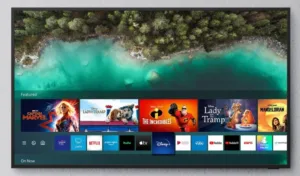Global smart TV shipments are forecast to decline 5.5% in 2023 compared to 2022, according to new data from the IDC. The decline is attributed to high inflation and consumers holding onto their TVs longer before upgrading.
| Smart TV OS | 2023 Market Share (%) | 2023/2022 Growth Rate (%) | 2027 Market Share (%) | 2027/2026 Growth Rate (%) | 2023-2027 CAGR (%) |
|---|---|---|---|---|---|
| Android | 38.1 | -4.6 | 39 | 5.3 | 3.7 |
| Tizen | 21.3 | -5.2 | 23 | 6.1 | 4.9 |
| Roku OS | 12.5 | 4.0 | 12 | 3.8 | 2.5 |
| FireOS | 3.4 | 13.2 | 4 | 7.8 | 8.3 |
| Others | 24.6 | -9.8 | 22 | 3.7 | 0.9 |
| Total | 100.0 | -5.5 | 100 | 5.0 | 3.3 |
However, the market is expected to stabilize in 2024 with flat growth projected. Slow growth is then forecast over 2025-2027, with global shipments achieving a 3.3% compound annual growth rate over the 5-year forecast period.
Much of the smart TV growth is occurring in emerging markets, while mature markets like North America face weak consumer demand putting downward pressure on shipments. This demand weakness is expected to continue into mid-2024. Vendors are relying on sales of premium TVs for profits, but it is uncertain whether this strategy can be sustained long-term amidst economic challenges.
As smart TVs transition from entertainment screens to smart home hubs, brands like Amazon, Roku and others are competing aggressively on price while expanding integrated smart home features. This is enticing consumers even in tight economic conditions.

